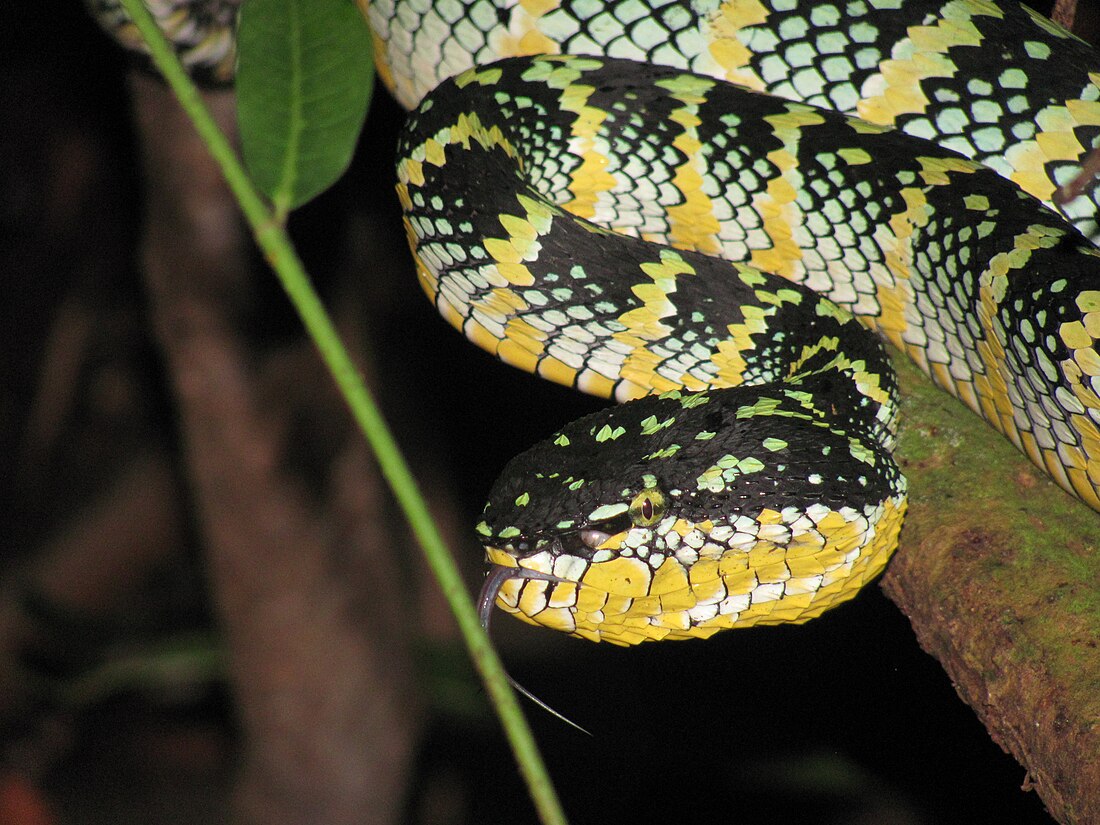Top Qs
Timeline
Chat
Perspective
Tropidolaemus
Genus of snakes From Wikipedia, the free encyclopedia
Remove ads
Tropidolaemus, the temple pit vipers, is a genus of pit vipers in the subfamily Crotalinae of the family Viperidae. Member species are native to southern India and Southeast Asia.[1] Five species are recognised as being valid, and none of these species has subspecies.[2]
Remove ads
Description

Tropidolaemus are sexually dimorphic. Females grow much larger than males. Females can reach about 1 meter long, or over 39 inches. Males usually only grow to about 75 cm, or around 29 and a half inches. These snakes have a unique head shape. Their heads are broad and shaped like triangles. Their bodies are relatively thin compared to their head. This makes them easy to spot.
They are found in a wide variety of colours and patterns, which are often referred to as "phases". Some sources even classify the different phases as subspecies. Phases vary greatly from having a black or brown colouration as a base, with orange and yellow banding, to others having a light green as the base colour, with yellow or orange banding, and many variations therein.
Remove ads
Geographic range
Tropidolaemus is native to southern India and Southeast Asia.[1]
Behaviour
These species are primarily arboreal, and are excellent climbers. They spend most of their time nearly motionless, in wait for prey to pass by. They may be diurnal or nocturnal, with their activity period depending on the temperature.[3]
Feeding
The diet includes small mammals, birds, lizards and frogs.[3]
Reproduction
The average litter consists of between twelve and fifteen young, with the neonates measuring 12–15 cm (4+3⁄4-5+7⁄8 inches) in total length.[3]
Species
Nota bene: A binomial authority in parentheses indicates that the species was originally described in a genus other than Tropidolaemus.
Remove ads
Taxonomy
Two species here were once classified as Trimeresurus, but were given their own genus due to distinct morphological characteristics.
One new species, T. laticinctus, was described recently by Kuch, Gumprecht and Melaun (2007). It is found on the Indonesian island of Sulawesi. The type locality is "between L. Posso and Tomini Bay, Celebes" [= between Lake Poso and Tomini Bay, Province of Sulawesi Tengah, Indonesia]."[4][5]
Remove ads
References
External links
Wikiwand - on
Seamless Wikipedia browsing. On steroids.
Remove ads





